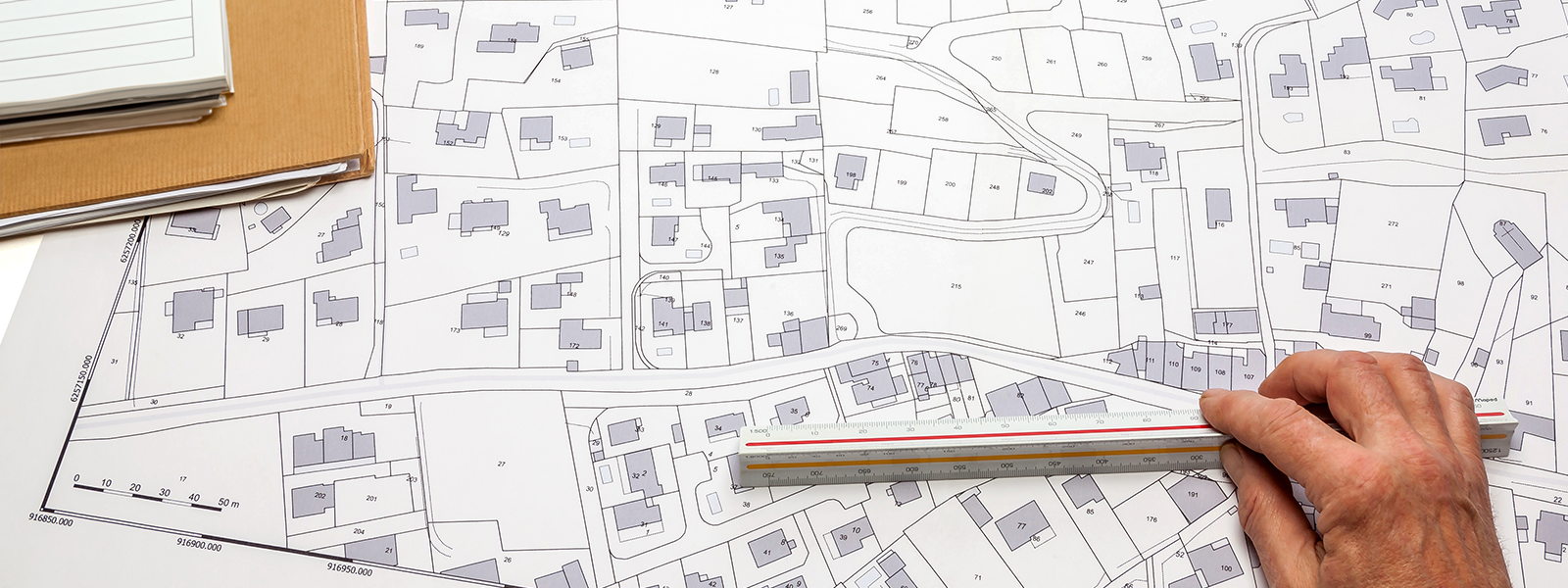Common Land Measurement Units Used in India - Land Area Units
October 18, 2024 in Property Guide

Land measurement units are different across the world. The same goes for India. The country has a diverse geography, which leads to the introduction of various units of land measurements. They often differ from region to region, making land transactions and surveys a complex affair. Today, we will learn all about the common land measurement units used in India, from their definition to their types and significance.
What is a Land Measurement Unit?
A land measurement unit is a standardised measure used to quantify the size or area of a piece of land. These units help individuals, organisations, and government authorities accurately assess and describe the extent of land. Land measurement units are crucial for various purposes. They include real estate transactions, land ownership records, land taxation, agriculture, urban planning, and environmental management.
Depending on historical, cultural, or administrative factors, various regions have different units. These units can vary significantly in size and name from one region to another. Common land measurement units include acres, hectares, square metres, square feet, and more. Their exact size and usage depend on the specific country or region's customs and regulations.
Types Of Land Measurement Units in India
India has various land measurement units. Understanding them is important for accurate land management and transactions. Here are the different types of land measurement in India –
Bigha
The term "bigha" is commonly used across India. It has variations depending on the state or region. The size of a bigha can vary significantly, but it generally ranges from 1,000 to 5,000 square metres. For example, in North India, a bigha may be roughly equivalent to 1,600 square metres, while in some parts of West Bengal, it can be closer to 2,500 square metres. The term is also prevalent in Nepal and Bangladesh.
Acre
The acre is widely used in India, particularly in real estate and agriculture. One acre is equal to 4,840 square yards or approximately 4,047 square metres. The use of acres is a legacy of British colonial rule, and it remains a popular unit for land transactions in many parts of India.
Hectare
The hectare is the most internationally recognised land measurement unit. It is commonly used in India for agricultural and real estate purposes. One hectare is equivalent to 10,000 square metres or 2.471 acres. It is often used for large agricultural landholdings and government land records.
Katha
"Katha" is primarily used in North India, especially in Uttar Pradesh and Bihar. Several states in Central India also use Katha. The size of a katha can vary. But it is typically around 1,350 square feet or approximately 125.4 square metres. Katha is often used for small land transactions and property tax assessments.
Guntha
Guntha is a unit of land measurement primarily used in West India. This includes Maharashtra and some parts of Gujarat and Karnataka. One guntha is roughly equivalent to 1,089 square feet or 101.3 square metres. It is commonly used for measuring small agricultural plots and land parcels.
Biswa
The biswa is used in Haryana, Punjab, and Himachal Pradesh. It is the most common land measurement unit used in North India. One biswa is typically around 150 square yards or 125.4 square metres. It is often used for agricultural land measurement and revenue assessment.
Cent
The cent is commonly used in South India, particularly in states like Kerala and Tamil Nadu. One cent is equal to 1/100th of an acre, which is approximately 48.4 square metres. It is a popular unit for measuring small land parcels, residential plots, and urban real estate.
Ground
In some parts of India, especially Tamil Nadu and Andhra Pradesh, the term "ground" is used to measure land. One ground is equivalent to 2,400 square feet or approximately 222.9 square metres. It is often used for residential properties and land transactions.
Decimal
Decimal is a standard unit of land measurement in East India. States like West Bengal and Assam commonly rely on it. One decimal equals 1/100th of an acre, approximately 40.47 square metres. It is widely used for land assessment and taxation purposes.
=> Read Also:- Pune Ring Road - Route, Map, Status & Latest Updates
These are some of the standard land area units in India.
The Significance of Land Measurement in India
Land measurement in India enables you to quantify the land size. It is imperative for individuals, businesses, and government authorities. They use the measurement to conduct land transactions, assess land values, plan land use, and determine land taxes accurately. Understanding the significance of land measurement units and how to calculate them is essential for anyone involved in land-related activities.
Here is why land measurement is important –
- Uniformity: The units provide a consistent and uniform method to express land area. They ensure that measurements are easily understandable and standardised across regions. This uniformity is especially important in a diverse country like India, where different regions use various land measurement units.
- Legal Transactions: Land measurement is crucial for legal land transactions. When buying or selling land, it's essential to know the exact size of the property to determine its value and legality. Accurate measurements help prevent disputes and legal issues.
- Land Valuation: Real estate professionals, appraisers, and government authorities use land measurement units to assess land value for taxation, development, or sale. A precise understanding of land area is fundamental to property valuation.
- Land Use Planning: Urban planners and government agencies use land measurement units to plan land use and development projects. Knowing the size of land parcels helps determine zoning regulations, infrastructure needs, and environmental impact assessments.
- Agriculture: Farmers and agricultural authorities rely on the measurement units to plan crop cultivation, irrigation, and land resource management. Knowing the size of agricultural plots is essential for efficient farming practices.
- Taxation: These units are a basis for calculating land taxes. Governments use these units to assess property taxes, which can vary depending on the size and location of the land parcel.
Calculation of the Land Measurement Unit
The land measurement unit calculation depends on the particular unit and its shape. Here are the steps for the same –
Square Metres
- Measure the length and width of the land parcel in metres.
- Multiply the length by the width to find the area in square metres.
Square Feet
- Measure the length and width of the land parcel in feet.
- Multiply the length by the width to find the area in square feet.
Acres
- Measure the length and width of the land parcel in feet.
- Divide the area in square feet by 43,560.
Hectares
- Measure the length and width of the land parcel in metres.
- Divide the area in square metres by 10,000.
Bigha, Katha, Biswa (North India)
- The size of these units can vary significantly depending on the region.
- It's crucial to consult local authorities or land records for clarity.
Cent (South India)
- Divide the area in square feet by 435.6.
These calculations assume that the land parcel has a regular shape. It's best to consult with a land surveyor who can provide accurate measurements for irregular shapes.
=> Read Also:- What is EOI (Expression of Interest) in Real Estate: Why is it Important?
Conclusion
Land measurement units are essential tools for land-related activities. They also facilitate land transactions, valuation, taxation, and land use planning. Calculating land area in various units ensures accurate and transparent transactions. Additionally, staying informed about local variations and regulations is crucial.
Adani Realty has recently set up flats in Pune, and those looking for properties in the area can consult them. If you need clarity about the land measurement in either of the places, contact Adani Realty today!
Looking for dream spaces, not sure where to start?
Leave us a query and our representative will get back to you.
Disclaimer
The Adani Realty expressly disclaims all liability in respect to actions taken or not taken based on any or all the contents of this Blog. The content of this blog is collation of data from various sources and is provided only for information purpose only and Adani Realty does not canvass the particulars, information, brand or any other materials mentioned in the blogs nor does it obtain any monetary benefit from the same.The Adani Realty shall in no circumstance be held liable for any expense, loss or damage including, without limitation, direct, indirect or consequential loss or damage, or any other expense, loss or damage whatsoever arising from the use of data, information, interpretation, judgement or opinion arising out of or in connection with the use of this Blog. Reader is advised to read and apply his/ her intellect and discretion in this regards.

